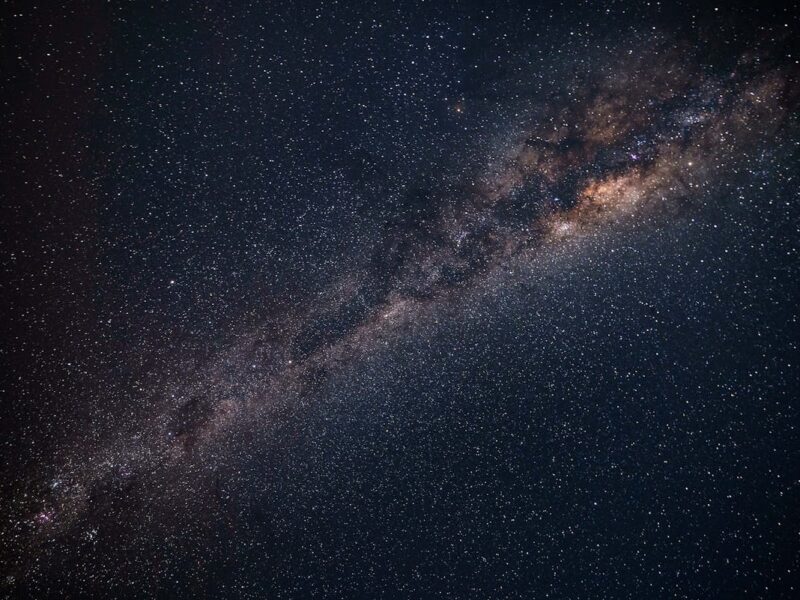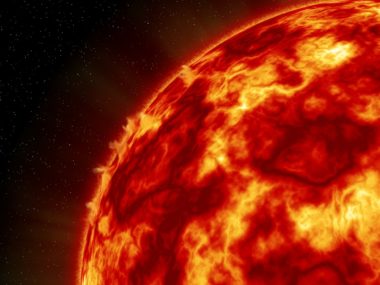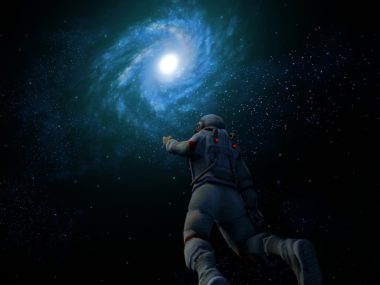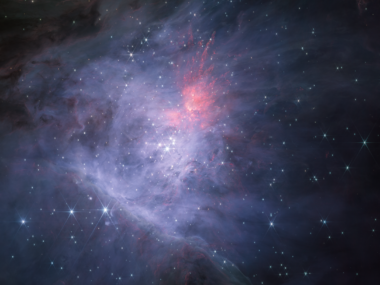It’s easy to get the impression that only Day 4 of Creation Week speaks to the astronomical realm. But in reality, the creative acts of Day 2 are critical in building a creation model of the universe. In Part 1 of this series, we discussed some major interpretations of the expanse that God created on Day 2. These lead to various understandings of the waters above and below that expanse. We finished Part 1 on the note that the cosmic understanding of the expanse has dramatic implications for creation cosmology. We’ll now consider three of those implications in particular.
The Universe is Finite
In conventional cosmology, the finitude or infinitude of the universe remains an open question.1 Isaac Newton hypothesized an infinite extent of the universe when formulating his theory of gravity. He realized that the law of gravity in a finite universe would result in a contracting universe. A contracting universe would contradict the long-standing notion of the eternality of the universe. This notion, which Newton and his contemporaries affirmed, traces its origins to the ancient Greeks. Newton proposed that the universe is infinite, in which all matter is evenly distributed in all directions. This does away with a center of mass for the universe, and gets around the problem of a contracting universe.2
Hubble discovered the expansion of the universe in the 1920s. This did serious damage to the idea of an eternal universe. The expansion of the universe implies that it was smaller and denser in the past. By working backward in time, it also suggests that the universe had a beginning. However, this did not do away with the possibility of an infinite universe. Ironic, considering the infinitude of the universe was originally proposed to salvage the eternal universe model.
From the account of Day 2 of Creation Week, however, we can deduce that the universe is indeed finite in extent. This is clear from the fact that God definitively created the universe –interstellar space– as the space between waters. These waters bound it above and below.
The Universe Has an Edge

Given the fact that the universe is finite, this point may seem redundant. But in actuality, it is possible to conceive of a finite universe without an edge. Indeed, the more popular versions of the Big Bang theory posit just that.3 Think of the surface of a sphere. In three dimensions, the sphere as a whole has boundaries. But in the two dimensional perspective of the surface of the sphere, there is no edge. You could travel forever in one direction, and you would never reach the end. You’d just keep retracing your steps. This unbounded nature of the universe is a key assumption of conventional astronomy. Whether finite or infinite, the universe has no bounds.
With the size of the universe being such as it is, we can’t empirically determine the geometry of the universe. At least, not at this point. Indeed, such questions fall under the domain of the necessary “admixture of ideology” inherent in building a model of the universe.4 But the Scriptural description of the waters above the expanse gives us a boundary around interstellar space. This is an edge to the place where the stars are. In other words, from the account of Day 2, we can determine that the universe does indeed have an edge.
The Earth is Near the Center of the Universe
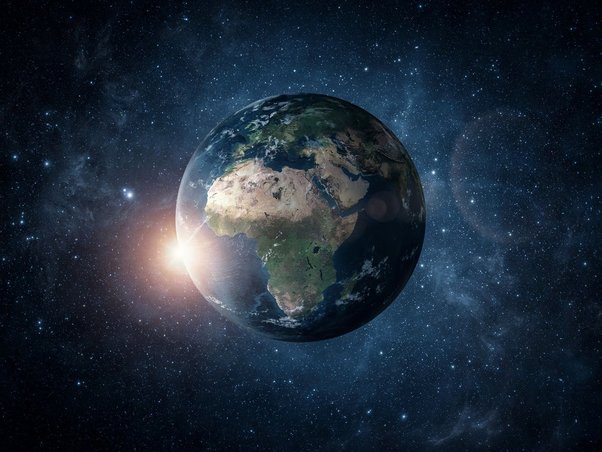
An edge to the universe is very significant. If the universe doesn’t have an edge –if it doubles back on itself like the two dimensional surface of a balloon– then there are no special locations in the universe. This fits nicely with the Copernican principle, which is a statement on the non-uniqueness of the Earth’s location in the universe. If the Earth is in a special place in the universe, that would imply the Earth is unique and special. But if the universe has no edges, and thus no center, there aren’t really any special places to be had for Earth or any other planet.
However, the Day 2 account does not just give us an edge to the universe. It also hints at the uniqueness of Earth’s location in the universe. Look again at the account (and let’s dip into Day 3 as well):
Then God said, “Let there be an expanse in the midst of the waters, and let it separate the waters from the waters.” So God made the expanse and separated the waters which were below the expanse from the waters which were above the expanse; and it was so. And God called the expanse heaven. And there was evening and there was morning, a second day. Then God said, “Let the waters below the heavens be gathered into one place, and let the dry land appear”; and it was so. And God called the dry land earth, and the gathering of the waters He called seas; and God saw that it was good.
Genesis 1:6-10
Notice what happens here. God divided the primordial waters by means of the expanse –the expanse that will later contain the sun, moon, and stars. The waters above the expanse mark the edge of the universe. God gathered together the waters below the expanse, and dry land appears –in a word, the waters below become our fair planet. Unless God spread out the expanse asymmetrically, this account implies the earth inhabits a unique position: near the center of the universe.5
Now, About Those Waters

Finally, we get to the question we set out to answer in Part 1 of this article. What are the waters above the expanse?
According to the cosmic interpretation of the expanse of Day 2, the waters above the expanse must lie at the edge of the universe. But what does water even look like, when it’s at the edge of the universe? What conditions exist there? Is the water solid, liquid, or gas? Could we ever detect this water?
In 2016, Dr. Danny Faulkner proposed that the waters above the expanse are still out there, at the extreme edge of the universe, in the form of liquid water.6 There are several lines of Biblical data that support this idea. First is the fact that Genesis 1 says clearly that the sun, moon, and stars were placed within the expanse, which was bounded below and above by water. This means the waters are at the edge of interstellar space. Secondly, passages such as Psalm 148:1-4, written after the flood, refer to the waters above the heavens still existing. They must still be out there. And lastly, the fact that the word “water” is used strongly implies that this water is in liquid form (not gaseous or ice). Dr. Faulkner further proposed that the waters above the expanse are responsible for the cosmic microwave background radiation.
The CMB Conundrum

Now, what is the cosmic microwave background (CMB) radiation? Well, it’s exactly what it says it is. Microwave radiation lies on the dark, cold end of the electromagnetic spectrum (down past violet and ultraviolet). Astronomers Penzias and Wilson, in 1963, discovered microwave radiation emanating from every direction in space. In other words, they discovered a very uniform, extremely low cosmic temperature. It turns out that the Big Bang model predicted such a background temperature to space – indeed, this is the Big Bang’s most successful prediction. Penzias and Wilson ended up winning a Nobel Prize for their discovery.
The CMB is not as well known amongst young-earth creationists as the light travel time problem. Still, the nature and cause of the CMB is a similarly nagging problem for creation astronomers. While its discovery fits nicely into the Big Bang model, it is unclear how the CMB is best understood in a creationist cosmology.
However, as Faulkner points out in his 2016 paper, the presence of water at the edge of the universe may be a significant piece of the creation cosmological puzzle. All matter having any temperature will give off some form of radiation. If the entire universe is surrounded by a layer of water, this water must radiate. Perhaps we can detect that radiation. Perhaps this water above the expanse, at the edge of the universe, is responsible for cosmic microwave background radiation.
While there is much more work to be done on this proposition, it’s an intriguing next step for the field of creation cosmology. And yes, it turns out that whatever it was that God made on Day 2 is pretty exciting, after all.
Footnotes
- Humphreys, D. R. (1994). Starlight and Time. Master Books, 14-18 ↩︎
- Faulkner, D. R. (2004). Universe By Design. Master Books ↩︎
- Hawking, Stephen W. (1988). A Brief History of Time. Bantam Books, 44 ↩︎
- Hawking, S. W. and Ellis, G. F. R. (1973). The Large Scale Structure of Space-Time. Cambridge University Press, 134 ↩︎
- Humphreys, D. Russell (1994) “A Biblical Basis for a Creationist Cosmology,” Proceedings of the International Conference on Creationism: Vol. 3, Article 25, 262. ↩︎
- Faulkner, D. R. (2016). Thoughts on the rāqîa‘ and a Possible Explanation for the Cosmic Microwave Background. Answers Research Journal, 9, 57–65. https://answersresearchjournal.org/raqia-cosmic-microwave-background/. ↩︎

